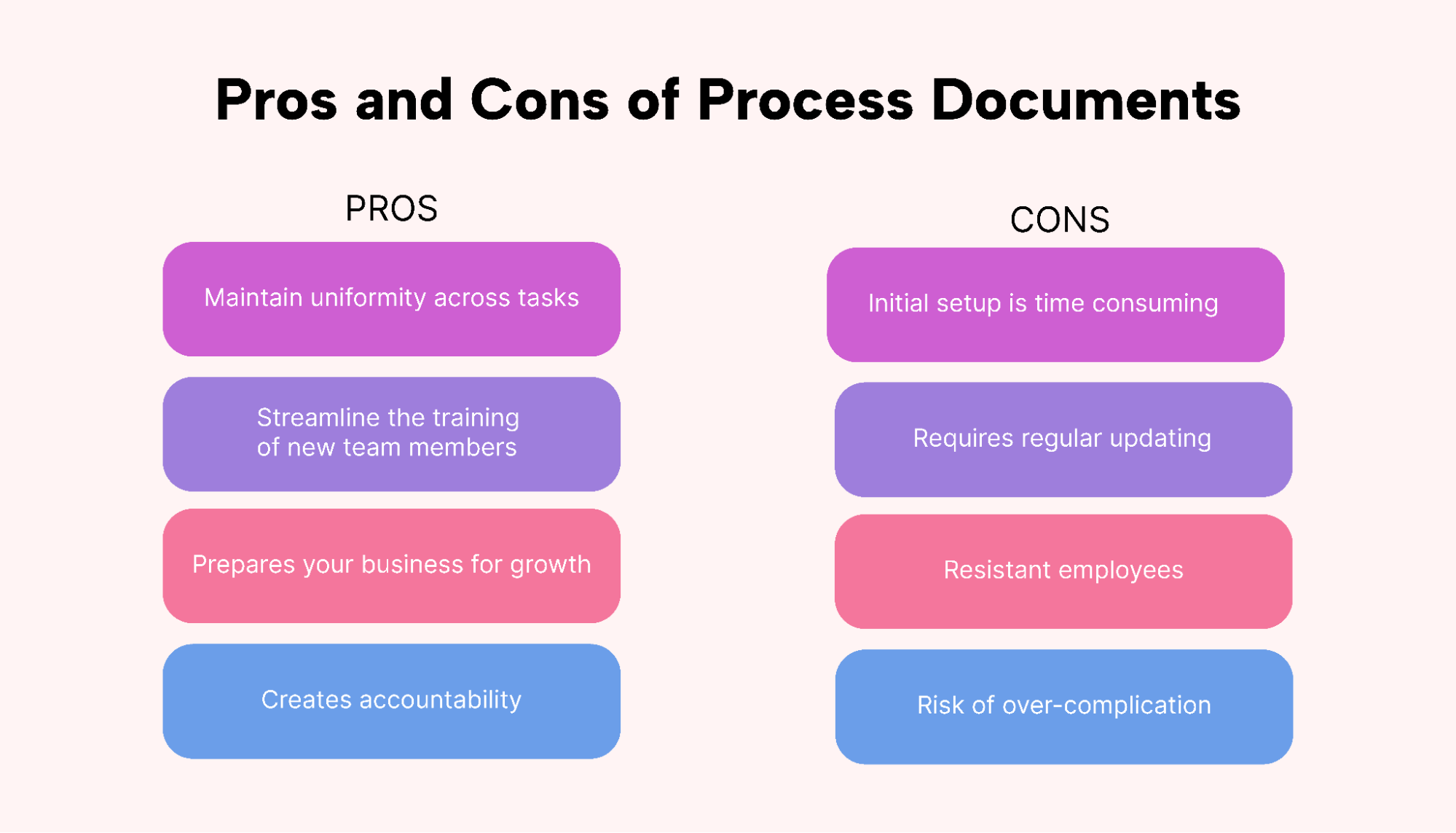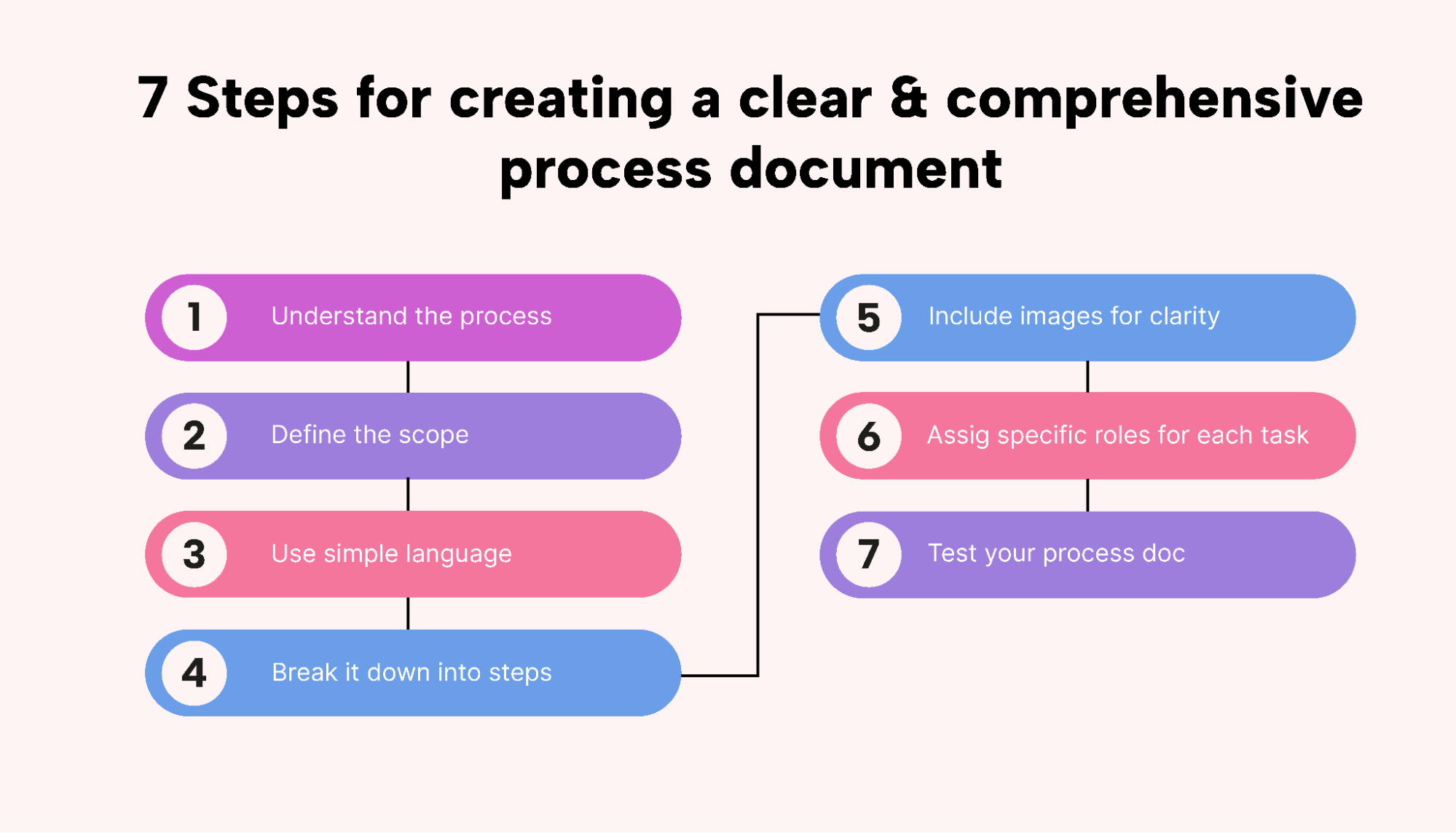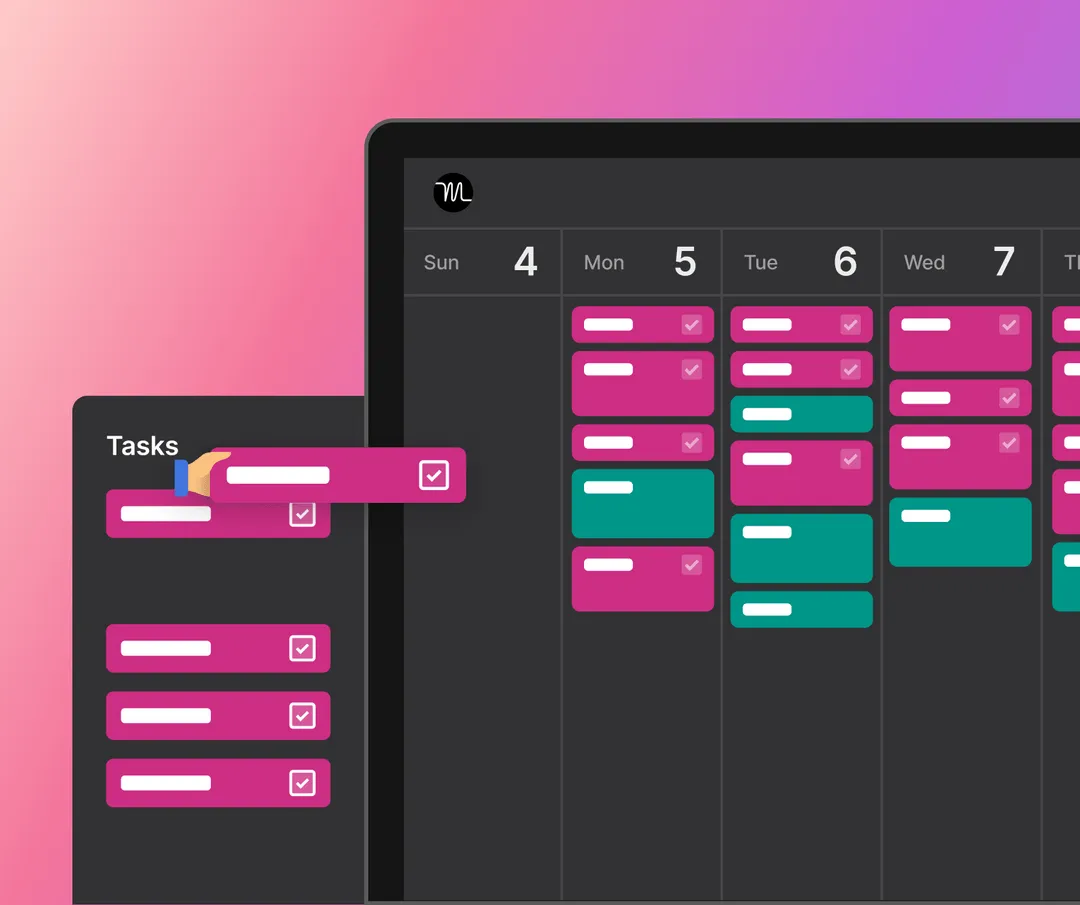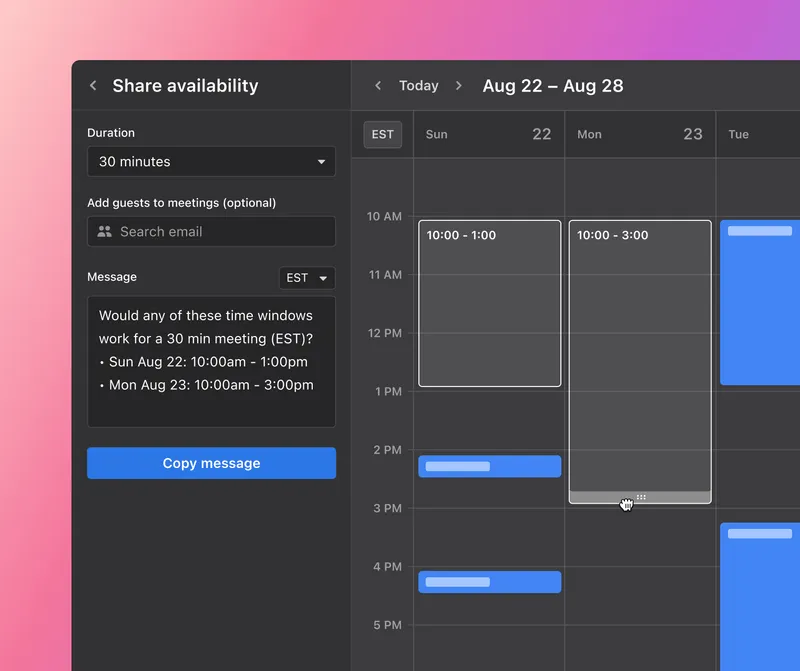Stepping into the realm of business process documentation might feel like walking into a maze. This feeling is especially true when aiming for clarity and efficiency in operations.
Just like every seasoned traveler swears by a compass, every business leader understands the necessity of a process document.
The catch? Only some people know the ins and outs of crafting a good one.
In this guide, we'll demystify what a process document is, give you a roadmap for creating one, and share a series of best practices to help you deliver a winning process document.
What is a process document?
Think of a recipe in a cookbook. It tells you what ingredients (process steps, or process inputs) you need and the steps to make a dish (process outputs and outcomes).
Similarly, a process document is a recipe for how your work gets done. It describes the tasks to do something the right way every time.
For example, a coffee shop probably does the same work every morning to prepare for the day.
Or, think about how a burger tastes the same at a big chain, whether you're in New York or London. That's because of a process document.
Process documentation isn't just for cafes and restaurants. Process documents are used in tech, shops, factories, and other industries. Even pilots use them to fly planes.
A process document isn't just a list of tasks. It's a guide that helps everyone work consistently.
Benefits and challenges of process documents
Every tool has pros and cons, and process documents are no exception. Before diving deeper, let’s get a quick overview of their benefits and challenges.
Benefits of process documentation
Having a process document is like having a playbook for a sports team. It guides everyone on what to do so things run smoothly. Here are some reasons they're great for businesses:
- Maintain uniformity: Just like a team plays better when everyone knows their role, a business runs better when everyone follows the process document. This means fewer mistakes and better work quality.
- Streamline training: Research by The Brandon Hall Group for Glassdoor discovered that companies with a solid starting process keep 82% more new hires and make them over 70% more productive. When a newcomer hops on board, handing them a process document is like giving them a roadmap on day one. They can swiftly dive into their role and know the way forward.
- Prepare for business growth: Businesses change and grow. With a good process document, it’s easier to add more people or open new locations. Everything they need to know is already written down.
- Accountability: With process documents, everyone knows who does what. This means no one is confused about their job, and things get done faster.
 |
In simple terms, a process document helps a business run like a well-oiled machine. It removes the guesswork, ensures everyone is on the same page, and sets the stage for success.
Challenges of process documentation
While process documents have many benefits, they come with drawbacks. Here are some challenges businesses might face:
- Initial setup is time-consuming: Creating a good process document takes time. It’s like building a puzzle. The first time might feel like slow-going.
- Requires regular updating: Businesses change, and so should their process documents. It’s a bit like a garden. If left alone, it might not serve its purpose. For that reason, regular check-ins and updates on process documents are needed.
- Resistant employees: Some people don’t like change. They might feel the new rules are too strict or limit their freedom at work.
- Risk of over-complication: Sometimes, listing every single step can confuse things. It’s like giving someone a map with too many paths – they might get lost!
Even with these challenges, it's important to remember the pros of process documents. With some effort and understanding, businesses can make them work in their favor.
How to write a process document in 7 steps
Creating an effective process document might seem challenging, especially for complex processes, but following a structured approach makes it more manageable.
 |
Here's a step-by-step guide to help:
1. Understand the process
The starting point is always understanding.
Before writing anything down, dive deep on the task or procedure. This might involve a brainstorming session, doing the task yourself, watching someone else do it, or performing a process analysis to make sure you capture every step.
The aim here is to get a clear holistic picture of the task or procedure..
Doing a process analysis as the first step of writing a process document will naturally help you understand (and detailing out) a procedure.
Example: If you're documenting the steps to handle a customer return, you might try doing the return yourself or observe how a customer service teammate handles it.
2. Define the process scope
Every process has a beginning and an end. These process boundaries must be defined. Define what triggers the start of this process and what indicates its successful completion.
Knowing these boundaries helps to make sure that no vital steps are left out, and nothing unnecessary is added.
Example: When onboarding a new employee, the scope might begin with "Receiving the signed job offer" and end with "The employee's successful completion of orientation and training."
3. Use simple language
The document should be easy to understand. Avoid industry jargon when possible, and if technical terms must be used, provide a clear explanation or definition.
Example: Rather than writing "run an SEO audit," it might be clearer to state, "check the website's search engine performance, making sure it can be found easily by users." This way, even someone unfamiliar with SEO will grasp the main idea.
4. Break it down into steps
Detail the exact steps of the process tasks. Avoid vague directions and make sure each instruction is clear and actionable.
Example: Don’t just say something like, "set up the system." Instead, detail the required actions, like "turn on the system, enter the credentials, and select the “start' option."
5. Include images for clarity
Visual aids can enhance understanding, especially for complex steps.
A picture can sometimes explain things faster and more clearly than words alone. Including diagrams, flowcharts, or photographs can provide clarity, reducing the chances of errors or confusion.
Example: If you’re explaining how to assemble a product display, include a visual of the completed setup so readers have a clear end-goal image to reference.
6. Assign specific roles for each task
Specify who’s responsible for each step in the process. This guarantees clarity in execution and establishes accountability.
Example: Instead of saying, “the team should review,” specify, “the Quality Assurance team should conduct the review.”
7. Test your process document
Before finalizing, have someone unfamiliar with the process use the document to perform the task. Their feedback can help refine unclear steps or identify areas needing more detail.
Example: Suppose you're setting up a new printer. Ask someone who's never done it before to follow your instructions. If they struggle to find the "setup" button or connect the cables, you'll know which parts of the process document need more clarity.
Taking the time to write a good process document pays off. Not only does it make things run smoothly, it also reduces mistakes. The document should be easy to understand, accurate, and easy to access. When done right, processes help teams do their jobs more easily and effectively.
Process document best practices
Regular updates
Think of processes as recipes. Over time, you might find a better ingredient or a quicker way to cook. That's why it's a good idea to keep checking and updating your process documents.
Encourage employee feedback
The people doing the tasks every day will have good ideas. Ask them what they think about the process document. Maybe they've found a quicker way to do something (or noticed something missing). Their input will only make the document better.
Prioritize easy access
A process document can't help if no one can find it. Make sure everyone knows where it is and can get to it easily. Using online tools like cloud storage or a company's website can help.
Use templates
Starting with a blank page can be hard. Using a process documentation template makes creating a new process document easier and faster. It also helps keep things consistent and organized.
Regular reviews
Set regular times to look over your process documents. Check if they're still helping or if anything needs to change. This way, they stay up-to-date and useful.
Using Motion to enhance your process document management
A study by Deloitte revealed that 94% of business leaders think AI is key to their success.
With this shift in business thinking, navigating the fast-paced realm of successful project management, especially keeping process documents up-to-date, can be daunting.
That's where Motion AI steps in.
This innovative tool simplifies and improves how you manage your documentation resource planning tasks.
AI-driven automatic scheduling for documentation tasks
With Motion's AI capabilities, you don't have to sweat overfitting documentation tasks into your schedule. Motion automatically sets them for you.
If something unplanned comes up, Motion's adaptive rescheduling jumps in so your documentation tasks are rearranged and promptly completed. This automated prioritization is like having a smart assistant making sure your documents remain up-to-date.
Integrated task and project management for streamlined documentation
Motion’s task and project management features ensure that every document-related task is visible and organized. It gives your team a centralized view of all documentation activities, promoting transparency and reducing the chances of overlooking critical tasks. Think of it as a master board that keeps everyone on the same page.
Efficient and conflict-free meeting scheduling
Motion's Meeting Assistant is a game-changer. Gone are the days of clashing meetings or double bookings.
This tool checks for overlaps and suggests alternative slots when arranging feedback sessions for your documentation process. It helps make sure your collaborations are efficient, saving you valuable time and the hassle of rescheduling.
Mastering process documents with Motion
Business can be like a puzzle. But process documents help make things clear and easy.
Still, creating these documents can be anything but clear and easy. But that’s where we can help.
With Motion, creating and managing your process docs is a breeze. With our Smart Features and info-packed knowledge base, we’re here to help you every step of the way.
Start with Motion for free and transform the way you handle business processes.








